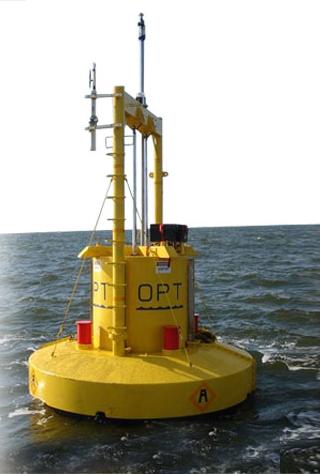Coast Guard's Deepwater continues its voyage through deep...trouble
One of the biggest tech projects ever undertaken by the Coast Guard continues its years-long free-fall, enduring another spanking for its mismanagement of the mammoth Deepwater security program, even as parts of the program report progress.
Last Friday, the US Department of Homeland Security took the remarkable step of stripping the Coast Guard of acquisition decision authority for expensive projects, including Deepwater. The decision was made on the basis of a Government Accountability Office recommendation back in June.
The GAO joins the Air Force and the National Reconnaissance Office in their decision to give the Coast Guard a financial "time-out." Both those services also ran into trouble on high-tech endeavors, with the Air Force foundering on its space programs in 2005 and the NRO choking either this year on a key satellite program.
The loss of authority means that Coast Guard officials will have to prove to DHS periodically that projects are on track and that future steps are acceptably clear.
On the Deepwater site, rear admiral Gary Blore writes that any claims that the Guard has lost major acquisition authority are "greatly exaggerated." He said that the move reflects DHS's attempt to align Coast Guard practices more closely with those followed by the Department of Defense as well as other Coast Guard efforts, and to bring Deepwater more in line with guidelines laid down in the relatively new Major Systems Acquisitions Manual that guides Coast Guard buying decisions (PDF available here).
So how did this very pricey program slip the procedural net for so long? Deepwater, under discussion since the mid-'90s, was launched in the wake of 9/11 and the Coast Guard's subsequent shift from the Department of Transportation to its current home at DHS.
At that time, it was understood that the service was in serious need of more and more modern gear, and plans were made to go big -- converting current patrol boats into cutters and acquiring hundreds of new ships, boats, helicopters, planes, and unmanned vehicles, plus the technology to not only run all that but to cover the locations that such vehicles can't always cover. (After all, 95,000 miles of coastline and 361 ports are a lot of terrain, even for what will one day amount to a Coast Guard the size of some countries' entire armed forces.)
Deepwater, which has cost at least $24 billion since its inception in 2002 (that's up from the original $17 billion estimate), is run by Integrated Coast Guard Systems -- a joint endeavor between Northrop Grumman and Lockheed Martin, two commercial entities. That arrangement was posited as helpful to the Coast Guard since it would give a "single contractual point of contact responsible for delivering all operational assets and capabilities," as the group's Web site says. Such teams come with their own lobbyists, which aren't much help in the engineering process, but add zing when it comes time to go to Congress for funding.
A lot of money was in play, and as it turned out the money folks' interests often drowned out those of the Coast Guard's own engineers and design experts.
The resulting technical snafus were legion. Classified communications gear was installed without shielding, meaning that electronic voice and data transmissions could be easily picked up by eavesdroppers. Radios destined to be exposed to the elements were not waterproofed. Retrofits to the elderly patrol boats were poorly engineered, leading to huge cracks in hulls and other structural problems and eventually the loss of boats that had been functional though aged. A fancy new glass-reinforced plastic meant for use in hulls of newer ships failed during testing and was abandoned, with $38 million down the tubes.
 Moving forward, one of the more technically interesting aspects of Deepwater is its array of oceanic sensors, which will sense vessels moving in our waters -- part of the covering-all-locations aspect of Deepwater. That's moving along apace, with an announcement this week that Ocean Power Technologies has signed a $3 million contract with the Navy for a system of buoys that will use the motion of the ocean to power the sensors down below.
Moving forward, one of the more technically interesting aspects of Deepwater is its array of oceanic sensors, which will sense vessels moving in our waters -- part of the covering-all-locations aspect of Deepwater. That's moving along apace, with an announcement this week that Ocean Power Technologies has signed a $3 million contract with the Navy for a system of buoys that will use the motion of the ocean to power the sensors down below.
The company demonstrated the buoys' performance last month in a single-unit test somewhere off the coast of New Jersey. Such buoys could, in arrays, also be used as offshore power generators for onshore electrical needs.